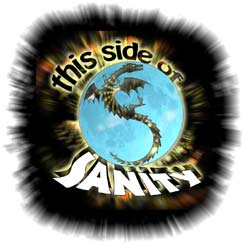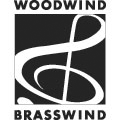
Musical Instruments
Musical Theory and Technique
This Side of Sanity
This chapter discusses musical instruments.
Traditionally musical isntruments have been divided into four main categories (based on sections of the orchestra): strings, woodwinds, brass, and percussion. A fifth category for keyboards is often used. Sometimes electronic isntruments are considered a sixth category (or alternately included in the keyboard category even if they don’t have a keyboard). Sometimes woodwinds and brass are combined into a category called wind instruments.
orchestral classification
Strings are instruments that have strings that are plucked or bowed. Although the piano has strings, it was not considered a string instrument because the strings were struck by hammers rather than being plucked or bowed (making it a percussion instrument).
The strings in an orchestra are the violin, viola, cello, and double bass. Harps (when used) are grouped in the string section of an orchestra.
Woodwinds are instruments where wind is blown through a wooden instrument. The modern flute is usually made of metal, but is considered a woodwind instrument because it originally was made of wood. Woodwinds are further divided into isntruments that have reeds and those that don’t have reeds.
The woodwinds in an orchestra are the flute, oboe, clarinet, and bassoon.
Brass are instruments where wind is blown through a metal instrument (usually brass). Brass instruments are further divided into valved and slide instruments.
The brass in an orchestra are the trumpet, French horn, trombone, and tuba.
Percussion are instruments that are struck (usually with a drumstick or beater). In terms of an orchestra, any instrument that doesn’t fall into the classifications of strings, woodwinds, or brass is considered to be in the percussion section. So, the piano and the whistle are considered percussion instruments in the orchestra.
The percussion in an orchestra are the timpani, side drum (or snare drum), tenor drum, bass drum, cymbals, gongs, xylophone, and marimba.
Keyboards are instruments that have a keyboard. The only keyboard commonly used with an orchestra is the piano.
Average Power: The average power of an entire orchestra is about 75 Watts.
formal classification
Musicologists classify instruments according to the way sound is produced.
Idiophnes are instruments that are struck and the body of the instrument produces sound. Examples include: bells, cymbals, rattles, and xylophones.
Membranophones are instruments in which a skin is struck and vibrates. Examples include drums.
Chordophones are instruments in which strings are plucked, bowed, or otherwise sounded. Examples include violins and pianos.
Aerophones are instrumentsthat are blown or use wind. Examples include the clarinet and the trumpet.
Electrophones are instruments where sound is produced electronically. Examples include the eletric organ and the synthesizer.




.gif)








